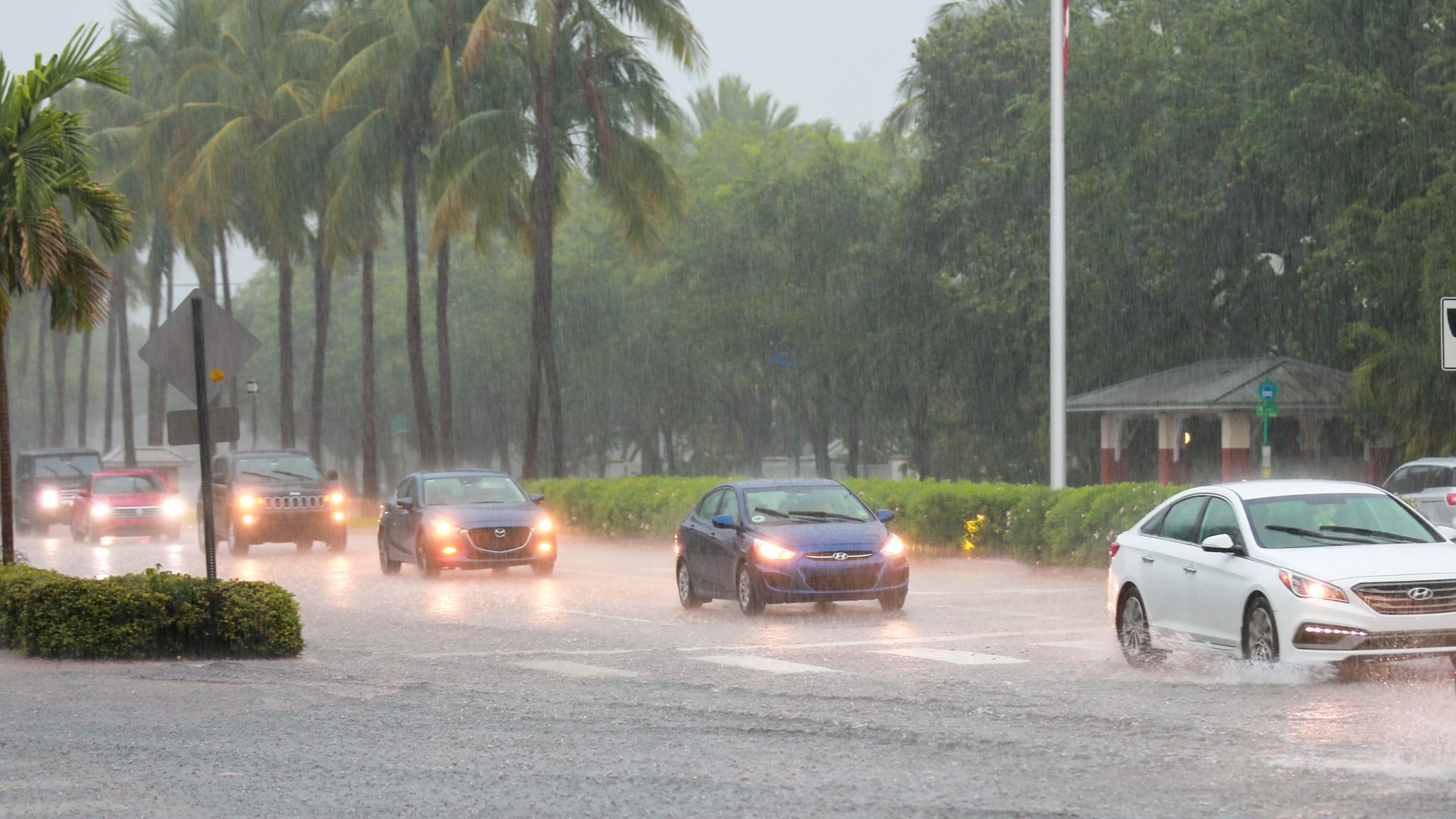With an eye to millions of dollars in new spending to control flooding, the Village Council approved a new taxation system for building and maintaining drainage systems. The Aug. 24 change, which will take effect a year from now, dramatically shifts costs from condominiums to single family homes.
Officials said the change is technically revenue neutral, but it reinforces a sometimes-controversial taxation methodology that could, in theory, be applied to many other village functions, such as utility undergrounding or even services. Council Member Ed London attempted to block the new system, which he called “convoluted,” pushing instead for the standard ad valorem taxation method. But his proposal failed to attract significant support.
Like the current system, the stormwater fee concept means that Homestead and Save Our Homes property exemptions won’t benefit residents who own the homes they live in. The changes adopted Wednesday shift the relative burden dramatically.
In the current system, in use since 1993, condominium owners pay about 60% of stormwater system costs. Under the new plan, they’ll pay 40%. Single family homes were paying 21% of the burden; now they will pay 43%. There is little change to the burden placed on non-residential property owners.
The stormwater fees are now about $1.9 million a year, but a major expansion is planned as part of the village’s plan to combat sea level rise. With those new expenses on the horizon, the question before the council was which tax system to embrace for paying for it.
It was a long and technical discussion
The formula, developed by the Raftelis consulting firm, relies on an aerial survey of the village to come up with a specific rating for each property, compared to a flat approach in the old system that treated all properties of a certain type the same way, with no variation for the size of the parcel. To account for the estimated 15% of Key Biscayne’s impervious area comprising roads, sidewalks, and public buildings, the formula estimates the number of vehicle trips and creates a base charge. Last-minute changes approved by the council will require a bit of recalculation, but officials said they would alter estimated rates by only 1%.
“There’s quite a number of stormwater utilities in the state of Florida that charge fees, as opposed to using ad valorem taxes,” said Raftelis Vice President Henry Thomas. “But I would say that 80% of the stormwater utilities in Florida do rely on impervious area as the basis to apportion costs.” Raftelis’ contract has cost about $49,000 to date, officials said.
| Current Monthly Fee | NewBase Fee | Impervious Area (IA) Fee | New Total | |
| Single-family Examples | ||||
| Small – 1,700 sf I.A. | $25.35 | $3.21 | $14.96 | $18.17 |
| Median – 4,800 sf I.A. | $25.35 | $3.21 | $42.24 | $45.45 |
| Larger – 12,500 sf I.A. | $25.35 | $3.21 | $110.00 | $113.21 |
| Multi-family Examples | ||||
| Small – 580 sf I.A. | $16.90 | $1.55 | $5.10 | $6.65 |
| Median – 964 sf I.A. | $16.90 | $1.55 | $8.48 | $10.03 |
| Larger-1,750 sf I.A. | $16.90 | $1.55 | $15.40 | $16.95 |
| Non-residential per 1,000 sfl.A. | $16.90 | $7.16 | $8.80 | $15.96 |
An ad valorem system, favored by London, allocates the cost based on the assessed value of the property, the same way most other municipal expenses are funded. But officials said a switch to ad valorem would trigger the limitation under the village’s debt cap.
“I like the ad valorem,” said Vice Mayor Brett Moss. But Moss said the village attorney had opined that using such a system could adversely affect bond financing. “It’s just not possible, so it’s off the table,” Moss said. The ordinance also allows for credits if homeowners take steps to reduce stormwater runoff.
“There’s nothing perfect about this,” Thomas said. “I’m saying the way we did it is defensible, supportable, and reflects standards in the industry for doing this kind of thing.”
The ordinance passed 5-2, with London and Moss dissenting.
The ordinance has been pending a long time, with meetings under the administration of then-Manager Andrea Agha and the Key Biscayne Condominium President’s Council. This May, that organization’s leader, mayoral candidate Fausto Gomez, repeated his call for the council to move forward with the Raftelis plan.
“We all have to pay our fair share,” Gomez said.
But determining what is fair is not always a straightforward exercise, especially when contrasted with the existing property tax system that awards tax breaks to people who stay in their homes.
Wednesday’s council debate recalled a dispute over how burying electrical power lines should be funded. The village’s undergrounding task force recommended a similar calculated system, also created by the Raftelis firm.
But when property tax exemptions were included, that system actually raised costs for some condominium property owners. The utility undergrounding project stalled after a change in state law moved some costs to electrical rate calculations.
It remains to be seen what funding approach will be used for undergrounding costs as part of the village’s resilience plan.
Invest in Local News for Your Town. Your Gift is tax-deductible
Tony Winton is the editor-in-chief of the Key Biscayne Independent and president of Miami Fourth Estate, Inc. He worked previously at The Associated Press for three decades winning multiple Edward R. Murrow awards. He was president of the News Media Guild, a journalism union, for 10 years. Born in Chicago, he is a graduate of Columbia University. His interests are photography and technology, sailing, cooking, and science fiction.



